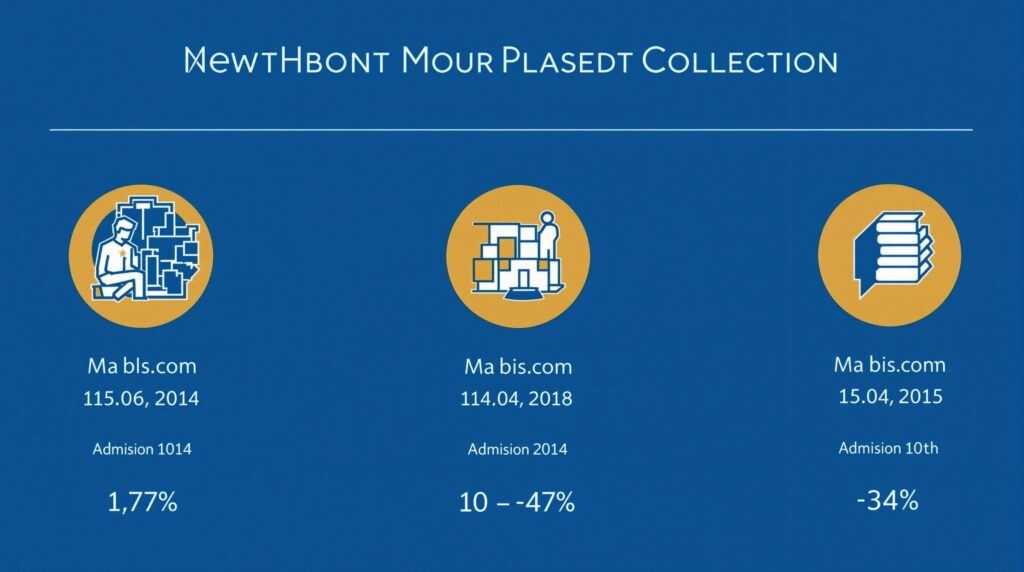Grant writing is a specialized process of creating compelling funding requests that connect educational organizations with financial resources from government agencies, foundations, and corporations. It serves as a critical bridge between institutions seeking to advance their missions and funders looking to support impactful educational initiatives that align with their priorities.
Key Takeaways
- Successful grant writing requires understanding eligibility requirements and strategic approaches to improve application success rates above the typical 10-30%
- Educational grants like Pell Grants and TEACH Grants provide billions in funding for students and institutions with specific criteria
- The NSF Graduate Research Fellowship offers substantial financial support ($159,000 total value) for STEM students pursuing advanced degrees
- Recent policy changes like the FAFSA Simplification Act have expanded grant accessibility and reduced administrative burdens
- Utilizing specialized tools and application strategies can dramatically increase your chances of securing educational funding
Understanding the Government Grant Landscape
What is grant writing, and how does it benefit organizations? At its core, grant writing is the formal process of requesting funding from government agencies, foundations, or corporations to support specific projects or programs. For educational organizations, grants represent billions in untapped funding that can transform institutional capabilities and student opportunities.
The government grant landscape is vast but competitive. Only 10-30% of applications ultimately succeed in securing funding. However, I’ve found that proper research and strategic application approaches can significantly improve these success rates. The key lies in understanding the specific requirements and priorities of each funding opportunity.
Government grants typically have rigid eligibility criteria that must be met before applying. These may include organizational status requirements (like 501(c)(3) for nonprofits), demographic considerations, or geographic restrictions. Educational institutions often have advantages in securing grants due to their established structures and alignment with many funding priorities.

Finding the Right Grants for Your Educational Journey
Identifying appropriate funding opportunities is the critical first step in successful grant writing. Each grant program has specific eligibility requirements that must be carefully reviewed. For instance, the NSF Graduate Research Fellowship Program requires U.S. citizenship, while TEACH Grants typically require a minimum GPA of 3.25.
For nonprofit educational organizations, having 501(c)(3) status is often essential for accessing many grant programs. Organizations without this designation may need to establish partnerships with accredited universities to qualify for certain funding opportunities. This collaborative approach can open doors to funding that might otherwise remain inaccessible.
Before applying for most federal grants, organizations must complete SAM.gov registration, which typically takes about 60 days. This process involves:
- Obtaining a DUNS number
- Registering with the System for Award Management
- Creating an organizational profile
- Verifying tax identification information
After registration, thorough analysis of each Notice of Funding Opportunity (NOFO) is essential. These documents contain detailed guidelines and expectations that must be addressed in your application. Aligning your project closely with the funder’s stated priorities dramatically increases your chances of success.
Pell Grants: The Foundation of Undergraduate Financial Aid
Pell Grants represent the cornerstone of undergraduate financial assistance in the United States. According to the National Association of Student Financial Aid Administrators (NASFAA), the average Pell Grant award increased by 3.6% ($96) in 2024 under the new Student Aid Index formula, reaching $4,974 nationally.
The impact of these grants is substantial. Over 6.4 million students received Pell Grants in 2023–24, with Mississippi, New York, and Louisiana distributing the highest average awards at $4,624, $4,624, and $4,559 respectively. The maximum award reached $7,395 in 2023-24, representing a $500 increase from the previous year.
Despite their availability, significant funding remains unclaimed. The National College Attainment Network (NCAN) reports that $4 billion in Pell Grants went unclaimed in 2023 due to incomplete FAFSA applications. This highlights the importance of educational organizations providing support for students during the application process.
The FAFSA Simplification Act has made meaningful changes to increase accessibility. Public two-year colleges saw a 17% increase in recipients, outpacing four-year institutions in growth. This trend reflects policy efforts to expand educational opportunities across diverse institutional settings.
TEACH Grants: Funding for Future Educators
For those pursuing careers in education, TEACH Grants provide specialized funding opportunities with unique conditions. The average award was $3,043 in 2020-21, with 44% of funds allocated to public four-year institutions according to Department of Education data.
TEACH Grant recipients commit to teaching high-need subjects (like STEM or special education) for four years after graduation. However, this service obligation carries risks – approximately 51% of recipients are projected to default on this requirement, causing their grants to convert to unsubsidized loans.
The 2020 regulatory reforms have made significant improvements to the program, including:
- Simplified employment certification processes
- Expanded eligible teaching fields
- Extended service deadlines from 5 to 8 years post-graduation
- Added pandemic-related flexibility provisions
While the maximum annual award of $4,000 is lower than Pell Grants’ $7,395 ceiling, TEACH Grants can be combined with other financial aid to create comprehensive funding packages. This makes them particularly valuable for future educators facing rising education costs.
NSF Graduate Research Fellowships: Advancing in STEM
The NSF Graduate Research Fellowship Program (GRFP) represents one of the most prestigious funding opportunities for STEM students pursuing advanced degrees. It provides $37,000 annual stipends and $16,000 tuition allowances, making it one of the most generous graduate funding programs available.
Competition for these fellowships is intense, with an overall success rate of approximately 15%. However, institutional support makes a significant difference. Cornell University’s writing workshops, for example, have increased applicant success rates to 30% – double the national average.
The total fellowship value of $159,000 far exceeds the average federal student loan of $37,000 per borrower, highlighting the program’s financial significance. However, access to these opportunities isn’t equally distributed. Top R&D institutions like Cornell and Columbia produce approximately 20% of awardees, pointing to institutional disparities in resource availability.
For educational organizations seeking to increase their students’ success with these fellowships, developing structured application support systems is critical. This might include writing workshops, faculty mentorship programs, and peer review opportunities to strengthen applications.
Policy Changes Expanding Grant Accessibility
Recent policy reforms have dramatically altered the grant accessibility landscape for educational organizations. The FAFSA Simplification Act reduced verification burdens, contributing to a 14-17% rise in Pell Grant recipients at private colleges according to NASFAA analysis.
TEACH Grant reforms have also expanded opportunities by extending service deadlines and providing pandemic-related flexibility. These changes have made the program more manageable for recipients facing uncertain job markets and placement challenges.
Public two-year colleges have been particular beneficiaries, seeing a 17% increase in Pell recipients – outpacing four-year institutions. This trend reflects efforts to distribute educational funding more equitably across institutional types.
States with larger populations often face unique funding dynamics. California’s 862,723 Pell recipients, for example, have lower per-student funding than smaller states due to complex cost-of-living adjustments in the funding formulas. Understanding these regional variations is essential for organizations maximizing their grant potential.
Maximizing Success: Application Strategies and Tools
Successful grant writing strategies increasingly leverage specialized tools and platforms. Instrumentl provides automated grant discovery and deadline tracking, though at a significant annual cost of $5,000-$10,000. For organizations with limited budgets, free alternatives like Grants.gov’s federal database containing 1,800+ funding opportunities can be excellent starting points.
Donor management systems like Neon CRM offer integrated grant compliance features that help track reporting requirements and deadlines. These tools can dramatically reduce administrative burdens while improving application quality and compliance.
Strategic approaches to application development make measurable differences in outcomes. Florida’s 436,304 Pell recipients secured $4,548 average awards by prioritizing full-time enrollment campaigns. Similarly, Texas leveraged its $63.9 million FSEOG allocation through community college partnerships to reduce award gaps.
Effective grant applications for educational organizations typically include:
- Clear alignment between institutional mission and funder priorities
- Specific, measurable outcomes and evaluation plans
- Realistic budgets with justified expenses
- Compelling narratives demonstrating need and impact
- Strong supporting data and evidence of organizational capacity
The collaborative development process often produces the strongest applications. Involving multiple stakeholders – including potential program beneficiaries – can substantially strengthen proposals by incorporating diverse perspectives and expertise.
Sources
NASFAA – Analysis Pell Grant Awards Grew Under New Federal Financial Aid Formula
NCAN – In 2023 High School Seniors Left Over $4 Billion on the Table in Pell Grants
BestColleges – Who Receives Pell Grants Statistics
NSF – Graduate Research Fellowship Program Solicitation



